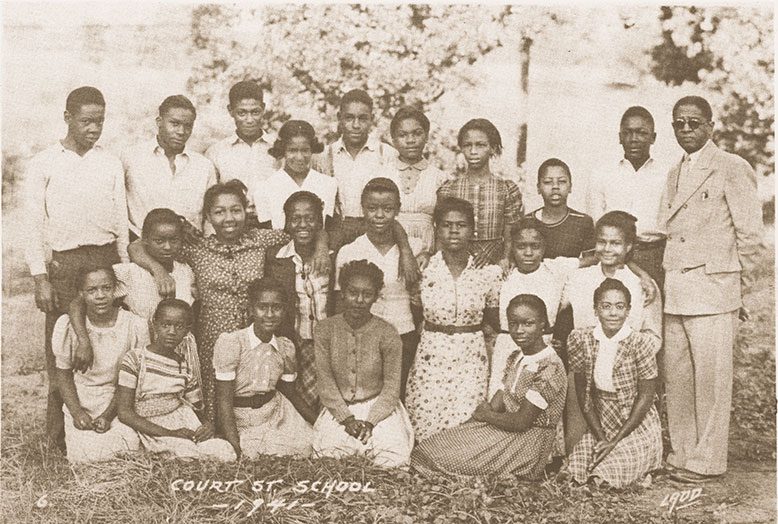
In the late 1930s, some parents of the black students at the Court Street School in Freehold Borough noticed something in the homes of the white families where they worked as domestics that they didn’t have in their own homes: class photos. The photographer who annually visited the all-white primary schools never went to the all-black school perched atop a hill at the edge of town.
“There were pockets of black families around town, and this is where all of those pockets unified,” says Lillie Ham Hendry, who grew up two doors from the school where her father was a custodian and where she and all eight of her siblings graduated from eighth grade.
What was originally known as the Freehold Colored School opened in 1915 in a small house in a neighborhood settled by the families of migrant farm workers from the South who had stayed in the North. It moved up the hill into a two-room, red-brick schoolhouse in 1921 and grew to four rooms in 1926: two grades in each room, except for the room on the far end, where the principal, George I. Read, taught the sixth, seventh and eighth grades.
“He was a second father to all of us,” Hendry says. Read hung photos of Booker T. Washington, Marian Anderson and other African-American heroes in the classroom, and pushed his students to take the entrance exam that was required by the integrated high school.
Hendry, now 86, attended Freehold High School, earned bachelor’s and master’s degrees in education, and returned to her hometown to work as a guidance counselor in the public schools that were finally integrated after the new state constitution in 1947 outlawed segregation. “The school and the churches helped us fortify against anything that was outside of us,” says Hendry. “Because of that, we had a place to be included.”
Court Street School closed in 1974 and later housed the county’s probation department. It was sitting empty in 1990 when its alumni decided it should be preserved as a community center. Years of fundraising and $800,000 in state and county grants brought it back to life. Hendry, who still lives down the block and serves as president of the Court Street School Education Community Center board of trustees, likes to ring a 1920s hand bell when she greets visitors to the restored fourth-and fifth-grade classroom where Miss Marcilla Jane Frisby once wrote her daily words of wisdom on the chalkboard. Mounted behind glass on the wall now is a collection of class photos from the 1940s. Those long-ago parents finally persuaded the school board that their children, too, were worth remembering.
